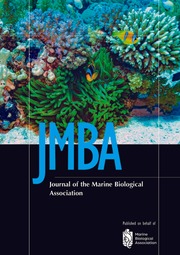Article contents
Effects of temporal variation on the vertical distribution of the macrobenthic assemblage of Amazonian saltmarshes
Published online by Cambridge University Press: 03 June 2025
Abstract
Saltmarshes are widely recognized as one of the most productive coastal habitats, and on the Amazon coast, Spartina alterniflora marshes are widespread on both marine and freshwater sites. On the Amazon coast, this ecosystem is subject to a wide array of environmental factors that influence its characteristics and associated macrobenthic fauna. However, few studies have been carried out in Amazonian saltmarshes when compared to others regions worldwide. Therefore, this study characterizes the vertical distribution of macrobenthic fauna in Amazon saltmarshes and their seasonal changes. Vertical stratified samples (0–10 and 10–20 cm) were collected during the rainy (April 2008) and dry seasons (November 2008) in saltmarshes located in an Environmental Protected Area located on the Northern Brazilian Amazon coast (Algodoal-Maiandeua island). The saltmarsh area varied between seasons, being denser and taller in the dry season. A total of 38 macrobenthic taxa were recorded, of which 11 were exclusively found in the dry season. The macrobenthic faunal structure varies among seasons, with higher density and richness in the dry season. Overall, higher densities and richness were found at near-surface layers in both seasons. We suggest that the vertical distribution of the macrobenthic fauna depend on the vegetation density in Amazon saltmarshes, since this vertical distribution is more prominent in the dry season where we observed higher Spartina density and most of the fauna is concentrated near the surface. Therefore, this study provides novel insights into macrobenthic distribution patterns, reinforcing that Amazonian saltmarshes have unique characteristics that strongly influence their distribution.
Information
- Type
- Research Article
- Information
- Copyright
- © The Author(s), 2025. Published by Cambridge University Press on behalf of Marine Biological Association of the United Kingdom.
References
- 2
- Cited by

